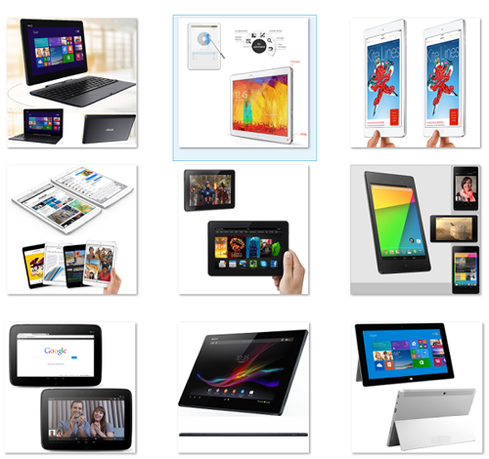iOS 7 Adoption Rate Wallops Android 4.4 KitKatiOS 7 Adoption Rate Wallops Android 4.4 KitKat
Only 1.1% of Android devices run the latest operating system, versus 70% of Apple iPhones and iPads.


10 Best Tablets Of 2013
10 Best Tablets Of 2013 (click image for larger view)
Android device owners are often just as excited as their iOS-using counterparts to grab the latest operating system for their hardware. However, most Android devices can't be updated until the carrier approves the new OS, and that often takes a lot of time. Apple's operating system model sidesteps the wireless network operators, giving it a huge advantage over Android. The adoption rates of iOS7 and Android 4.4 KitKat highlight this effect in great detail.
More than half of iOS device owners in North America updated to iOS7 within a week of the operating system's Sept. 18 release, according to Chitika Insights, an online advertising network. Two-and-a-half months later, the iOS7 adoption rate in North America (based on web traffic) has surpassed 70%, putting it on track to be Apple's fastest-adopted OS yet.
iPhone users are slightly quicker to adopt new operating systems than are iPad users. Chitika Insights analyzed tens of millions of US and Canadian iOS-based online ad impressions on its network between Oct. 25 and Nov. 18. Its data shows that 74.1% of iPhone users have jumped to iOS7, while only 63.8% of iPad users have upgraded. iOS6 is still being used on 22.4% of iPhones and 24.6% of iPads. A small number of iPhone users, 2.6%, are still using iOS5, but a higher number, 8.8%, of iPad owners are still using iOS5. This can be attributed to the large number of original iPads still in use, since they cannot be upgraded beyond iOS5.
[Is an Apple device on your gift list? See Apple iPads Beat Early Holiday Expectations.]
iOS6 took six months to reach 83% of all iOS devices. Chitika believes iOS7 will reach that point much faster.
"The latest analysis again underscores that iPhone users, and iPad users to a lesser extent, update at extremely high rates, acting as a distinctive selling point when it comes to attracting application and mobile Web developers to the platform," said Chitika.
The key factor here is how iOS devices are updated. iPhone and iPad owners can jump from one operating system to the next by downloading and installing the new one themselves. Apple generally releases the OS to all devices at the same time, maximizing the potential number of people who will update.
Android's adoption rate stands in stark contrast to that of iOS. Google recently released its monthly breakdown of Android version stats, and the difference is staggering. A month after its debut, Android 4.4 KitKat is registering on just 1.1% of Android devices. (It's important to note that Chitika measured adoption only in North America, while Google measured worldwide adoption.)
The reason for KitKat's limited appearance is the way Android devices are generally updated. KitKat is available only to a handful of phones, including the Nexus 5, Nexus 4, and Motorola Moto X. It is also available to the Nexus 7 and 10 tablets. These devices, though popular, are not as popular as iPhones and iPads. They make up a much smaller percentage of the entire Android installed base. Google is able to deliver system updates to Nexus-branded devices directly. Most other Android devices must receive their operating system updates from the wireless network operator -- and therein lies the rub.
Before an Android phone can be updated, the manufacturer needs to rebuild the platform for each specific phone for each specific carrier. The carrier then needs to approve the updated platform. This process can take months. Only after the carrier approves the updated OS will it be pushed out to end-user devices. iPhones and iPads don't need carrier approval to grab the latest OS.
Despite KitKat's limited appearance, the second-most recent build of Android is doing well. Jelly Bean (versions 4.1 - 4.3) is now running on 54.5% of Android devices: Android 4.1 is on 37.4% of Android devices, Android 4.2 is on 12.9%, and Android 4.3 is on 4.2%. Android 4.0 Ice Cream Sandwich is on 18.2% of devices, and Android 2.3 Gingerbread is (still) on 24.1% of devices.
Consumerization 1.0 was "we don't need IT." Today we need IT to bridge the gap between consumer and business tech. Also in the Consumerization 2.0 issue of information: Stop worrying about the role of the CIO. (Free registration required.)
About the Author
You May Also Like






